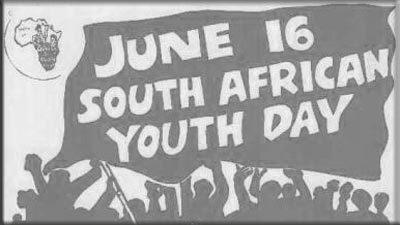June 16 is a national day dedicated to South Africa’s youth. It commemorates the Soweto student uprising of 1976.
June 16 which is officially known as Youth Day takes on different themes every year. This year’s theme is “Working together for Youth Development and a Drug free South Africa.”
Launching Youth Month, Arts and Culture Deputy Minister Obed Bapela said: “We are mindful that if we do not address this problem, our youth will not be able to enjoy the fruits of freedom which the past generation fought very hard for. Equally, we join the Parliament in celebrating this Youth month under the theme: “Youth at the centre of Economic opportunities”.
Youth Day will be celebrated in Newcastle, KwaZulu-Natal this year.
Background
The youth of South Africa have throughout history played a significant role in changing the course of the country’s contemporary history. Names such as Hector Petersen and Tsietsi Mashinini have become synonymous with that with the sacrifices made by ‘the class of 76’. The image shot by photographer Sam Nzima, of a running Antoinette Sithole (Hector Peterson’s sister) and Mbuyisa Makhubo carrying the fatally wounded Hector Peterson towards Phefeni Clinic, has itself become a powerful visual narrative capturing the sacrifices made on June 16, 1976 and adding to the broad narrative of South Africa’s state of emergency at that time.
Township schools across the country were awakening politically and developing well-articulated demands on educational issues. Researcher at the South African Democracy Education Trust, Sifiso Ndovu, notes that structural changes in the economy and society, including political changes brought about by apartheid as well as the emergence of subcultures in Soweto’s secondary schools in the 1970’s gave prominence to a militant and revolutionary rhetoric underpinning various liberation movements at the time.
The introduction of Afrikaans as a medium of instruction at selected schools which further highlighted the Afrikaner nationalist ideology galvanised a fair amount of young people into student political activism.
The National Party introduced the Bantu Education Act in 1953. Under the Act, a newly formed Black Education Department was to be integrated into the Department of Native Affairs under Dr Hendrik F. Verwoerd. By 1954 Bantu Education had been introduced in black schools. Prior to that, Black people who went to school had largely relied on missionary school education, but only for a few had the privilege. Bantu Education in general allowed more Black children access to school in Soweto, but it was inferior in standard.
Schools in the townships were ill-equipped with no facilities such as science laboratories, libraries and sports fields. The reality was that government was spending far more on White education than on Black education; R644 was spent annually for each White student, while only R42 was budgeted for a Black school child. Black schools were overcrowded thus made learning and teaching conditions highly unfavourable.
Speech: Arts and Culture Deputy Minister Obed Bapela
On the 16th of June 1976, hundreds of school children in Soweto took to the streets in protest of the decision taken by the apartheid regime that Afrikaans was to become the medium of instruction in schools, this was applicable to students from Grade 7 (then Standard 5). This meant that subjects like mathematics and social studies were to be taught in Afrikaans and general science, housecraft and woodwork would be taught in English.
The plan was to start marching towards Orlando West Secondary School in Vilakazi Street and then proceed to Orlando Stadium to meet with other students from all over Soweto congregating at the stadium.
Once at the stadium, they would proceed to the regional offices of the Department of Bantu Education and deliver a memorandum listing all their grievances. The students, however, did not make it that far. Police had already intercepted the students’ plans and were in no time on the scene. They ordered the defiant students to disperse, but their threats fell on deaf ears.
Teargas was opened and police dogs released into crowds of students, what ensued was chaos and mayhem. Students retaliated by throwing stones at the armed police, without warning, opened fire on the students. Also underpinning this revolt were the broader narratives of anti-apartheid and Black Consciousness.
Many innocent children lost their lives on that day, dead bodies, burnt shops, destroyed vehicles and bellowing smoke could still be seen the morning after.
– By SABC News Research and National Youth Development Agency


